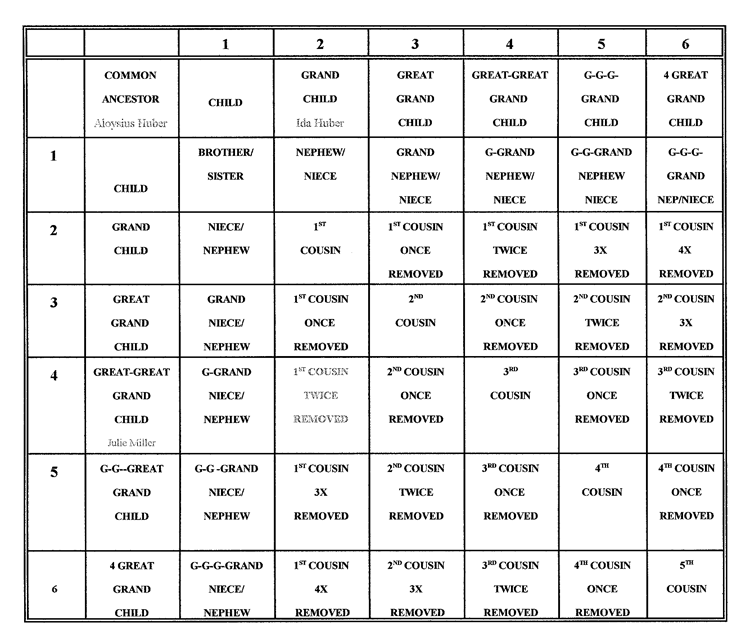Aunt Mary’s daughter’s grandson or my first cousin twice removed
21 August 2004
Summer is the time for family reunions. Reunions are the perfect opportunity to gather information for your family history because there are usually relatives at reunions that you rarely see.
A popular topic of conversation at family reunions is relationships. But relationships frequently confuse people. Grandparents, uncles, and nieces are all relationships that are commonly understood. But how do you know if someone is a first or second cousin and what does “removed” mean?
The term "cousin" is often used generically to describe any relative that is not in one’s immediate family. In truth, a cousin is a person who is related by descent from a common ancestor in a line that is split. The common ancestor is the first ancestor that is shared in the direct line of descent. The direct line of descent is a straight line, such as parents, grandparents and great- grandparents.
Most people know that the children of their parent’s siblings are their cousins. The common ancestor is a grandparent. This is called first cousin because they have the same grandparents and the cousins are in the same generation. This continues down the line, second cousins are people who share a great-grandparent, and third cousins share a great-great grandparent. The important factor to remember is that the cousins are both in the same generation from a common ancestor. For example, Dorothy McGrady is attending the reunion and she wants to know how we are related. Dorothy McGrady is the granddaughter of Mary Ann Garbally. Mary Ann Garbally is the sister of my grandfather, Thomas Garbally. Our common ancestor is Dennis Garbally, who is a great-grandfather to both Dorothy and myself. Therefore, we are second cousins.
This has not been too complicated so far but now we have to deal with those “removed” cousins. Remember, you and your first cousin are from the same generation. Removed simply means that you are from different generations. The son of your first cousin is your first cousin, once removed. The times removed identifies how many generations separate the two people. For example, Tom Ross is attending the reunion and we want to know how we are related. Tom is the great grandson of my Aunt Mary. Our common ancestor is John Potter, who is my grandfather and Tom’s great-great grandfather. Tom is in the 5th generation, I am in the 3rd generation from John Potter. Subtract three from five and you get two. Tom Ross is my first cousin, twice removed.
There are charts, such as the one below, that can help. To discover the relationship between two people, first determine the common ancestor. Assign Person #1 to the top row of the chart and choose their relationship to the common ancestor from that row of boxes. Pencil in the names if that makes it easier. Choose Person #2's relationship to the common ancestor from the left column boxes. The box where the two intersect identifies the relationship between the two people. To illustrate my point, I have inserted the Tom Ross example on the chart.

The chart can be extended indefinitely by adding rows and columns. Relationships can be
abbreviated to save space and time. For example 3C1R means third cousin, once removed.
Learning how everyone is related can be made into a fun activity at family reunions. Make a large copy of the relationship chart, hang it up, and watch the fun begin. Then get your pencil and paper out because everyone will be talking about family history.